British air defenses failed to intercept low-flying aircraft, allowing Argentine A-4 squadrons to bomb and sink the destroyer Coventry in the 1982 battle.
The British Ministry of Defense announced plans last week to upgrade the Sea Viper air defense system on warships, after a Houthi drone penetrated the long-range defense net and approached the multi-purpose destroyer HMS Diamond, forcing it to fire its 30mm close-in defense system to shoot it down.
The Sea Viper upgrade appears to be a hasty effort to bolster Britain's fleet air defenses, avoiding a repeat of the situation that led to the sinking of the destroyer HMS Coventry during the Falklands War with Argentina in 1982.
On April 2, 1982, the Argentine military launched an attack on the British-controlled Falkland Islands, which the country called the Malvinas, located about 500 km from the southern tip of Argentina. The British forces stationed there quickly surrendered due to being outnumbered.
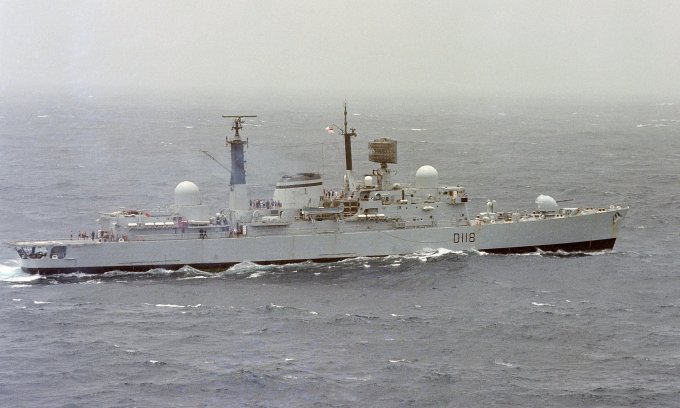
HMS Coventry moves to the area near the Falkland Islands in 1982. Photo: British Ministry of Defence
The British Ministry of Defense then dispatched a powerful fleet, including the aircraft carriers HMS Hermes and HMS Invincible, many amphibious transports, destroyers, missile frigates and patrol boats, to the Falklands with the goal of retaking the islands. The task of protecting the two aircraft carriers was assigned to the Type 42 destroyer squadron including HMS Coventry, HMS Sheffield and HMS Glasgow.
The Type 42 class destroyers, which entered service in 1975, were Britain's most modern warships at the time and were often referred to as the "crown jewels" of the country's navy. Each was equipped with 22 Sea Dart long-range anti-aircraft missiles capable of attacking targets at a distance of 74 km.
After the sinking of HMS Sheffield by an Exocet missile on 10 May 1982, the Royal Navy had to develop a new air defense strategy to make use of its remaining forces. Each Type 42 destroyer would be accompanied by a Type 22 missile frigate, and would be deployed far from the main fleet to attract Argentine fighter jets.
If the Type 42s' Sea Dart missiles fail to take down their targets, the Type 22 frigates will fire short-range Sea Wolf missiles to intercept them. They will also be supported by a squadron of Sea Harriers deployed from the aircraft carrier, creating a multi-layered air defense network to protect the fleet.
This tactic initially proved effective, with British warships shooting down several Argentine aircraft. However, HMS Glasgow was later severely damaged in an Argentine raid and had to return to the UK for repairs, leaving HMS Coventry as the only Type 42 destroyer still deployed near the Falkland Islands.
On May 25, the Coventry and Broadsword began patrolling northwest of Falkland Sound. This position close to land makes it difficult for air defense radars to detect targets and reduces the effectiveness of Sea Dart missiles.
The Argentine Air Force spotted the British warships and launched a coordinated attack with four A-4 Skyhawk light attack aircraft. The first two aircraft, piloted by Captain Pablo Carballo and Lieutenant Carlos Rinkemang, carried 450 kg conventional bombs, while the others were equipped with three 250 kg bombs.
British Sea Harriers took off, chasing the first Argentine A-4 Skyhawk formation, but had to retreat so the two warships could turn on their radars to search for targets. The Argentine fighters were now flying close to the sea, making it impossible for the Coventry's Sea Dart system to distinguish them from land.
HMS Broadsword attempted to lock on, but the Sea Wolf system was unable to track the target due to the close proximity of the A-4 formations. The system was also paralyzed and could not be restarted until the Argentine aircraft dropped their bombs.
One of the bombs hit Broadsword's helicopter hangar but failed to explode, destroying only the Lynx inside. The Coventry's crew claimed to have hit one Skyhawk with infantry fire, but both aircraft returned safely to base.

HMS Coventry listed after being hit by an Argentine bomb on May 25, 1982. Photo: British Ministry of Defence
The second A-4 formation, piloted by Lieutenant Mariano Velasco and Ensign Jorge Barrionuevo, approached HMS Coventry 90 seconds later at an angle of 20 degrees to the port side of the warship.
The crew of the Coventry still could not lock on to the target and decided to randomly launch a Sea Dart missile to chase away the enemy, while turning the warship sharply to the right to narrow the angle of attack of the enemy's attack aircraft.
The Broadsword's Sea Wolf system then successfully restarted and locked onto the Argentine aircraft, but the Coventry's sharp turn completely blocked the missile's firing angle on the friendly warship.
The 20mm Oerlikon autocannon on HMS Coventry's port side jammed, leaving the crew with only their rifles and machine guns to deal with the Argentine attack aircraft approaching at high speed. The Skyhawk squadron dropped their bombs and quickly disengaged, returning to land safely.
Three 250 kg bombs hit the port side of the British destroyer, just below the surface of the sea. Two bombs exploded, causing serious damage to the British destroyer. The first bomb completely destroyed the computer compartment and the operations room, killing almost the entire command staff.
The second bomb struck the forward engine compartment, detonating below the medevac room and causing the ship to list to port immediately. This was the most damaging blow, as the bomb tore through the bulkhead between the two engine compartments, causing uncontrolled flooding in the largest space on the ship.

Location of the Falkland Islands and some of the British warships sunk in 1982. Graphic: British Empire
Military experts say the design of many watertight compartments allowed the Type 42 destroyer to survive being hit by two bombs in almost every location except the two areas where the bombs exploded during the attack on May 25.
The crew abandoned ship within 20 minutes, the ship capsized and sank shortly afterwards. 170 survivors were rescued by HMS Broadsword.
The attack killed 19 officers and sailors on the spot and injured 30. Paul Mills, who suffered a traumatic brain injury in the attack, died of complications in early 1983.
Vu Anh (According to Royal Navy, Express )
Source link







![[Photo] Prime Minister Pham Minh Chinh chairs the first meeting of the Central Steering Committee on housing policy and real estate market](https://vphoto.vietnam.vn/thumb/1200x675/vietnam/resource/IMAGE/2025/9/22/c0f42b88c6284975b4bcfcf5b17656e7)
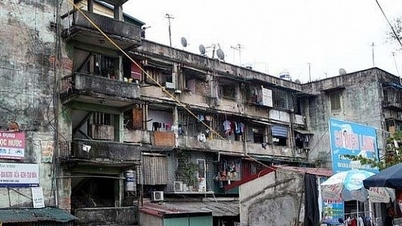











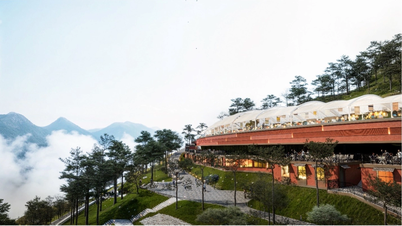
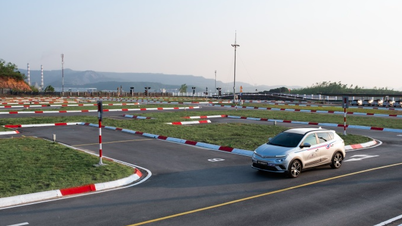



![[Photo] General Secretary To Lam presents the First Class Labor Medal to the Vietnam National Energy and Industry Group](https://vphoto.vietnam.vn/thumb/1200x675/vietnam/resource/IMAGE/2025/9/21/0ad2d50e1c274a55a3736500c5f262e5)

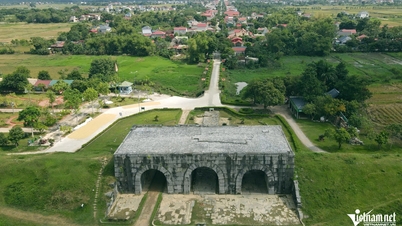





































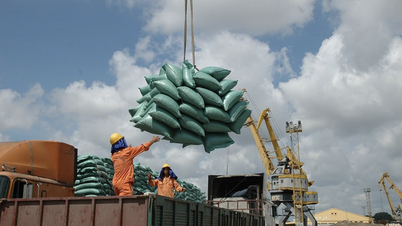



























Comment (0)